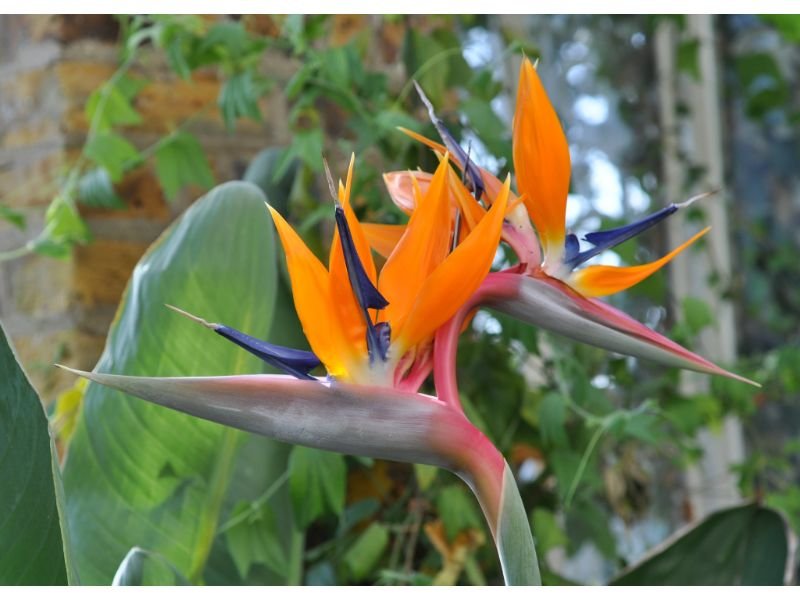If you’re a gardening enthusiast or simply want to add a touch of exotic beauty to your landscape, the Bird of Paradise with double flowers is an excellent choice. In this comprehensive article, we will delve into the techniques, tips, and secrets to successfully cultivate these stunning plants. So, let’s dive right in and uncover the secrets of growing Bird of Paradise with double flowers!

Table of Contents
What Are Bird of Paradise Plants?
Bird of Paradise plants, scientifically known as Strelitzia reginae, are stunning ornamental plants native to South Africa. With their vibrant colors, unique structure, and tropical appeal, these plants have gained immense popularity among gardeners worldwide. The Bird of Paradise gets its name from the resemblance of its flowers to the plumage of a bird in flight.
Understanding the Double Flower Variety
The double flower variety of the Bird of Paradise plant is a mesmerizing variation that exhibits an even more extravagant display of colors and form. Unlike the traditional single-flowered variety, the double-flower variety features additional layers of petals, creating a fuller and more striking bloom. This unique characteristic sets the double-flower Bird of Paradise apart and makes it a coveted addition to any garden or landscape.
Factors Affecting Successful Growth

Before we delve into the detailed steps of growing Bird of Paradise with double flowers, it’s essential to understand the factors that contribute to their successful growth. By paying attention to these crucial elements, you can provide your plants with the ideal conditions they need to thrive:
1. Climate and Light Requirements
Bird of Paradise plants thrive in warm, tropical climates, and they require ample sunlight to develop their stunning blooms. Ideally, they should be planted in locations that receive full or partial sun exposure for at least six hours a day. If you live in a region with colder climates, you can grow them indoors or in greenhouses to simulate their preferred environment.
2. Soil Preparation and Drainage
To ensure healthy growth, it’s important to prepare the soil properly before planting your Bird of Paradise with double flowers. These plants prefer well-draining soil with a slightly acidic to neutral pH level. Incorporating organic matter, such as compost or well-rotted manure, into the soil can enhance its fertility and drainage properties.
3. Watering and Humidity
Bird of Paradise plants appreciate regular watering to maintain moist soil conditions. However, it’s crucial to avoid overwatering, as it can lead to root rot and other fungal diseases. Strike a balance by providing enough water to keep the soil evenly moist, allowing it to dry slightly between waterings. Additionally, misting the foliage occasionally can help create the humid environment that these plants enjoy.
4. Feeding and Fertilization
To promote robust growth and abundant blooms, it’s essential to feed your Bird of Paradise plants with a balanced fertilizer. Choose a slow-release fertilizer or a well-balanced water-soluble fertilizer, and follow the manufacturer’s instructions for application rates. Regular fertilization during the growing season, typically from spring to fall, will provide the necessary nutrients for healthy plant development.
Planting and Care Tips

Now that we have covered the essential factors for successful growth let’s move on to the step-by-step process of planting and caring for your Bird of Paradise with double flowers:
Step 1: Selecting a Suitable Location
Choose a location in your garden that offers adequate sunlight and protection from strong winds. The site should have enough space to accommodate the mature size of the plant and allow proper air circulation.
Step 2: Preparing the Planting Hole
Dig a hole that is slightly larger and deeper than the root ball of the plant. This will provide ample space for the roots to spread and establish themselves. Ensure that the soil in the planting hole is loose and well-draining.
Step 3: Planting the Bird of Paradise
Gently remove the plant from its container, taking care not to damage the roots. Place the root ball into the prepared hole, ensuring that the top of the root ball is level with or slightly above the ground surface. Backfill the hole with soil, firming it gently around the base of the plant.
Step 4: Watering and Mulching
After planting, thoroughly water the newly placed Bird of Paradise to settle the soil and eliminate any air pockets around the roots. Apply a layer of organic mulch around the base of the plant, leaving a small gap to prevent direct contact with the stem. Mulching helps retain moisture, suppresses weed growth, and regulates soil temperature.
Step 5: Regular Maintenance
To keep your Bird of Paradise plants in optimal condition, follow these maintenance practices:
- Water regularly, providing enough moisture to keep the soil evenly moist but not waterlogged.
- Remove weeds and any dead or yellowing foliage to maintain a clean and healthy appearance.
- Apply a balanced fertilizer every two to three months during the growing season to support vigorous growth.
- Prune the plant as needed to remove damaged or unruly leaves and encourage a compact shape.
Conclusion
Growing Bird of Paradise with double flowers can be a rewarding and enchanting experience. By following the guidelines and tips outlined in this comprehensive guide, you can create a flourishing oasis of these exotic plants in your garden. Remember to provide the ideal climate, light, and soil conditions while paying attention to watering, fertilizing, and regular maintenance.
With proper care and patience, your Bird of Paradise plants will reward you with a stunning display of vibrant colors and extraordinary blooms. Start your journey to growing Bird of Paradise with double flowers today and witness the beauty of nature unfold in your own backyard!

Gardening is my passion and growing plants indoors has always been a stress relief for me. Grow a banana tree in my apartment once (although failed to produce bananas).






